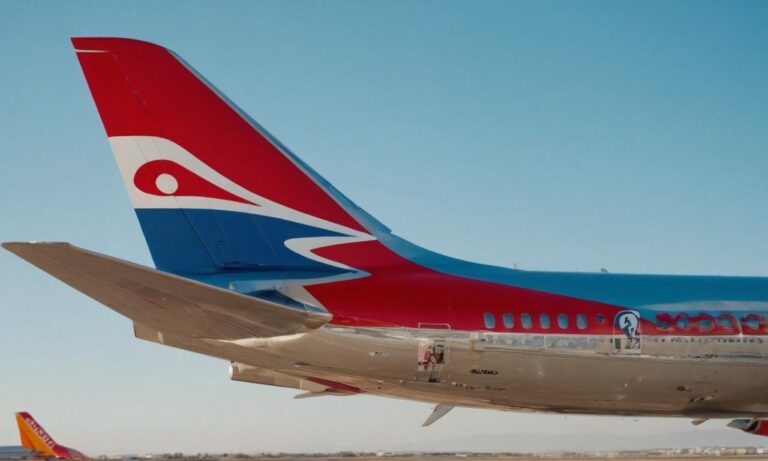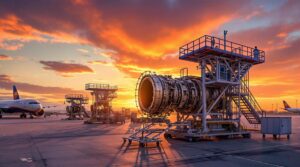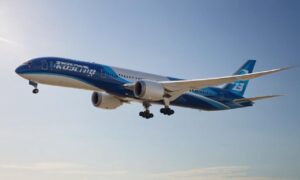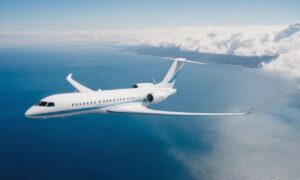When it comes to the intricacies of aircraft design, the vertical stabilizer plays a crucial role in ensuring stability and control during flight. This article delves into the functions, design, and significance of the vertical stabilizer on a plane, shedding light on its vital contribution to the overall performance of an aircraft.
The Purpose of the Vertical Stabilizer
The vertical stabilizer, also known as the fin, is a vertical wing-like structure located at the tail of an aircraft. Its primary purpose is to provide stability along the yaw axis, preventing unwanted side-to-side motion, also known as yawing. Yaw control is essential for maintaining the aircraft’s heading during various flight conditions.
Design and Components
The vertical stabilizer is typically attached to the rear fuselage and often features a fin and a rudder. The fin is a fixed vertical surface, while the rudder is a movable control surface attached to the trailing edge of the fin. The combination of these components allows the pilot to control the aircraft’s yaw by adjusting the rudder’s position.
The size and shape of the vertical stabilizer vary among different aircraft types. Factors such as the aircraft’s size, weight, and intended use influence the design of this crucial component. Engineers carefully consider aerodynamics and structural integrity when determining the optimal dimensions and shape of the vertical stabilizer.
Aerodynamics and Stability
Aerodynamically, the vertical stabilizer generates lift in the opposite direction to the yaw induced by disturbances such as crosswinds. This counteracting force helps maintain the aircraft’s stability and prevents uncontrollable yawing. The effectiveness of the vertical stabilizer is a result of meticulous design and engineering, ensuring optimal performance in a variety of flight conditions.
Contributions to Flight Safety
The vertical stabilizer significantly contributes to flight safety by enhancing the aircraft’s overall stability and control. Pilots rely on this critical component to maintain proper heading, especially during challenging situations like crosswind landings and engine failures. The vertical stabilizer plays a pivotal role in preventing dangerous yaw-induced oscillations and ensuring the safety of both passengers and crew.
In conclusion, the vertical stabilizer on a plane is a fundamental component that contributes to the aircraft’s stability and control. Its design, aerodynamics, and role in ensuring safe flight make it a key focus of aerospace engineering. Understanding the importance of the vertical stabilizer provides valuable insights into the complexities of aircraft design and the measures taken to guarantee a safe and stable flying experience.
Frequently Asked Questions
Before we conclude, let’s address some common queries related to the vertical stabilizer on a plane.
How does the vertical stabilizer differ from the horizontal stabilizer?
The vertical stabilizer is responsible for stability along the yaw axis, preventing side-to-side motion. In contrast, the horizontal stabilizer focuses on pitch stability, preventing the aircraft from pitching up or down. Both stabilizers work together to ensure overall flight stability.
Are there variations in vertical stabilizer design among different aircraft models?
Yes, the design of the vertical stabilizer varies based on factors such as aircraft size, weight, and intended use. Engineers consider aerodynamics and structural integrity to determine the optimal dimensions and shape for each aircraft type.
How does the vertical stabilizer contribute to crosswind landings?
The vertical stabilizer generates lift in the opposite direction to yaw induced by crosswinds. This counteracting force helps maintain the aircraft’s stability during crosswind landings, allowing the pilot to control the heading and ensuring a safe touchdown.
| Vertical Stabilizer Component | Function |
|---|---|
| Fin | Provides fixed vertical surface for stability. |
| Rudder | Movable control surface for yaw control. |
Advancements in Vertical Stabilizer Technology
Continual advancements in aerospace technology have led to innovations in vertical stabilizer design. Modern materials and computer-aided design techniques contribute to more efficient and aerodynamically optimized vertical stabilizers, further enhancing overall aircraft performance.






